
| Lingeblog Home |
| Previous |
| Next |
Crtd 2014-05-01 Lastedit 15-10-27
A Cutwater
A ten by three meter platform, 3 meters high almost full length, like mine, is a decent wind-catcher. When, like mine, it is has an aluminum flatbottom and 20 cm draft, it is like a dry leaf floating on top of the water. With beam reach wind Bf 3-4 from starboard, I sail like this in a channel.

This is rather confusing to other ships. Moreover, wind in channels is irregular, so steering should be by watching gusts coming as they darken the windward water surface and anticipating them by steering windward before they arrive, or you get blown to the wrong side of the channel. At low speeds the correction must be more, at zero speed, say, waiting for a bridge to open, with wind as in the picture, you have to turn and wait lying exactly abeam (across) the channel. Few among onlooking operating officers and other skippers will understand what your are up to. Havoc all around. Crazy captain? No! Crazy ship!
The answer is (in theory): mounting a cutwater (Dutch: loefbijter), plate at the bow of the platform, I was told by people who had seen them on historic barges. There stories gave me an impression like on the picture below.
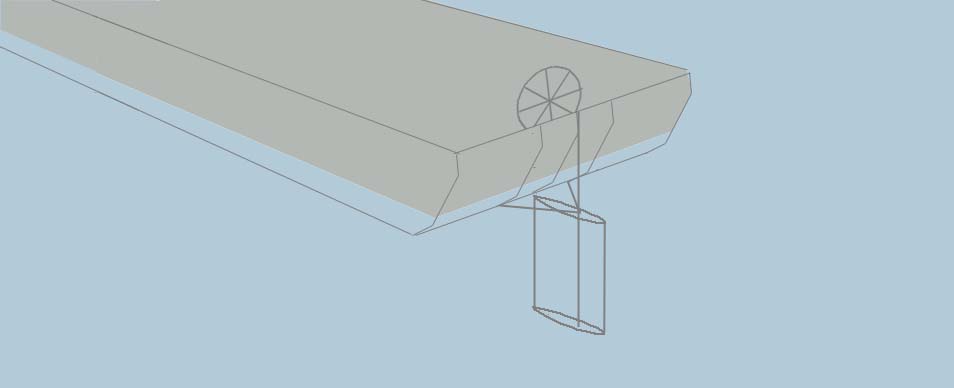
... a cutwater (Dutch: loefbijter), plate at the bow of the
platform ...
With a cutwater, my bow will drift much less at a windgust. The stern will drift as before, but there is the outboard to countersteer. For beach landings and low tide dry sand banks the thing should be dismountable.
So far for philosophy. Now first make one.
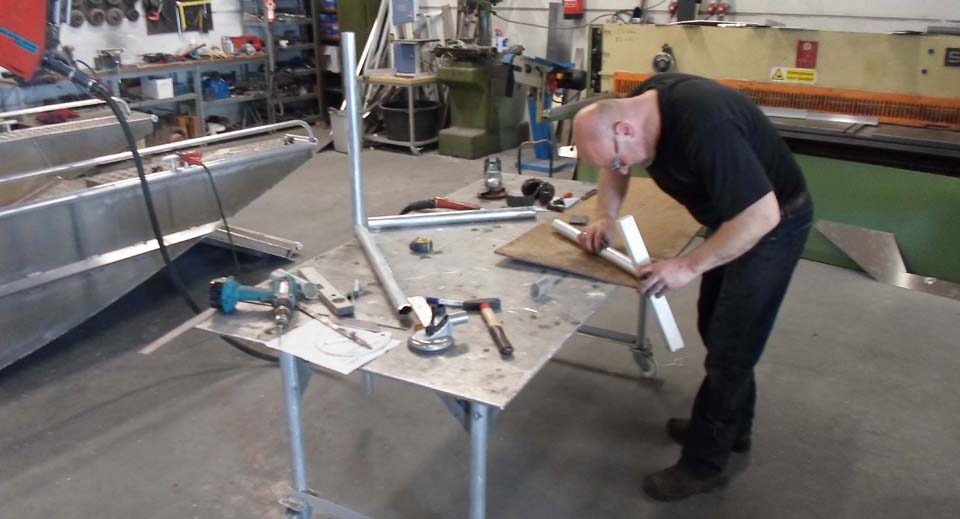
...
Jobbe
wrestling with the wooden mould I brought ...
This is not easy at all: where the short tubes meet the bow, they have to be sawed double mitre, that is skewed over both the horizontal and the vertical diameter line of the tube, where, since the circumference is circular, you have to decide what is vertical by putting a mark. After mismarking and changing the colour of our markers twice and on one moment of despair hearing Jobbe say "ehmm ... I think I lost it for a moment", we ended up with a frame that should, according to our protocol, fit.
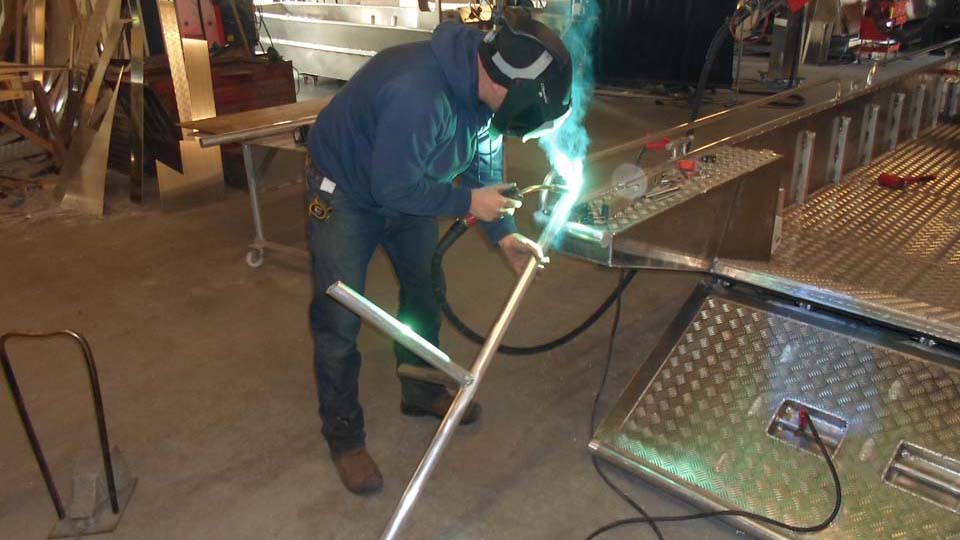
... before the mounting
of the plates I will drive home to check if all lengths and edges are right ...
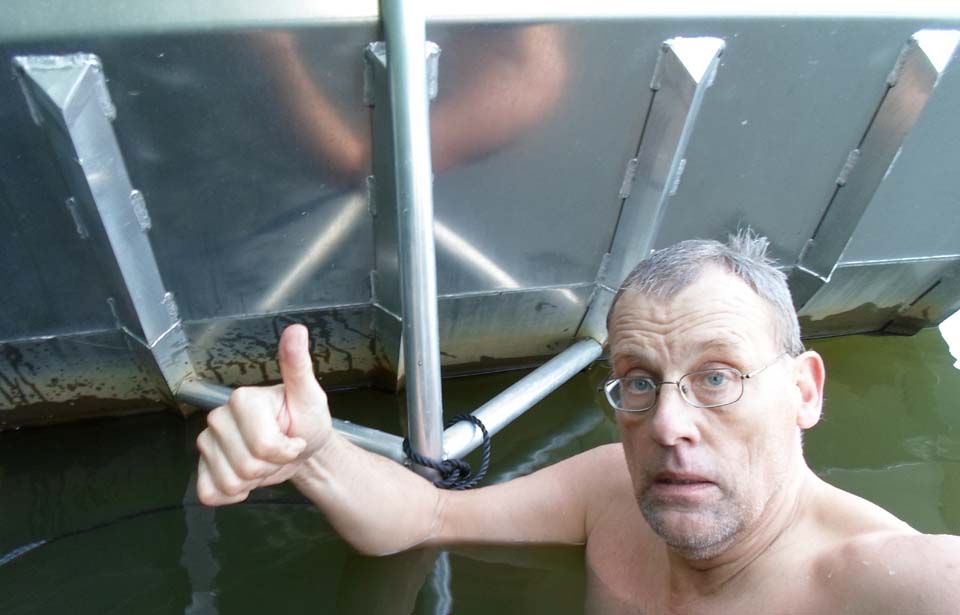
... back home and ... yes! ...
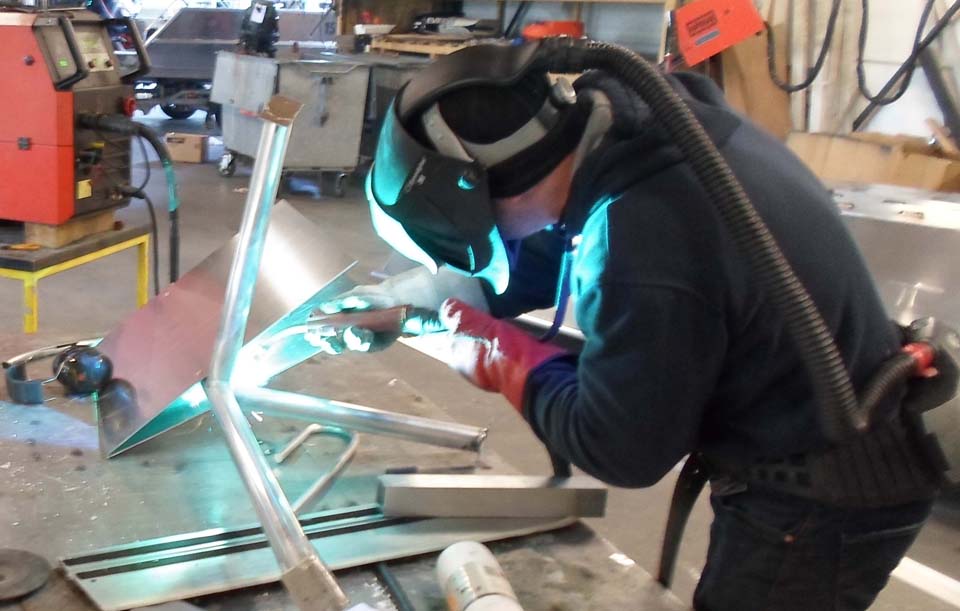
... now we can mount
the drift preventing plates ...

... bending
the plates together both sides of the vertical tube and welding ...
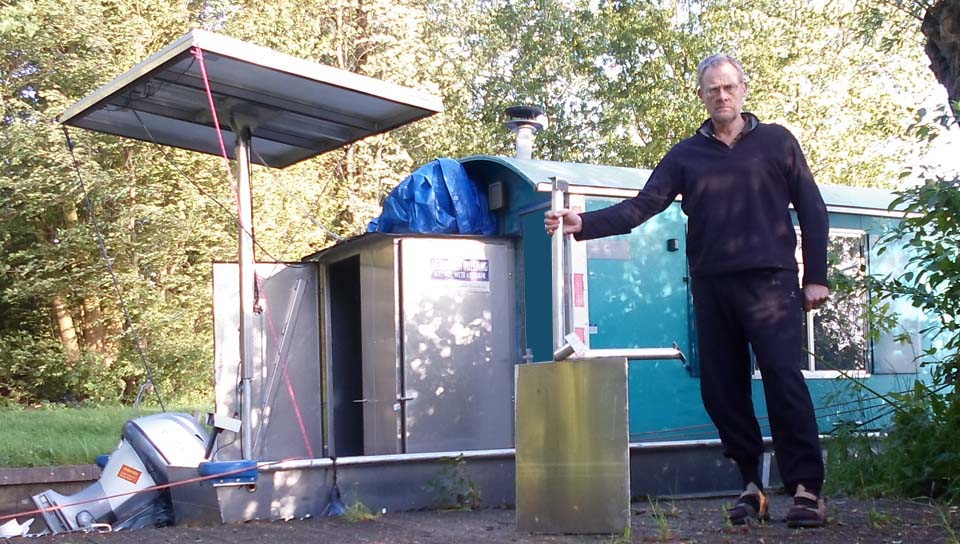
... this
object is new on earth: not from any model, a design based on hearsay and pure
thinking ...
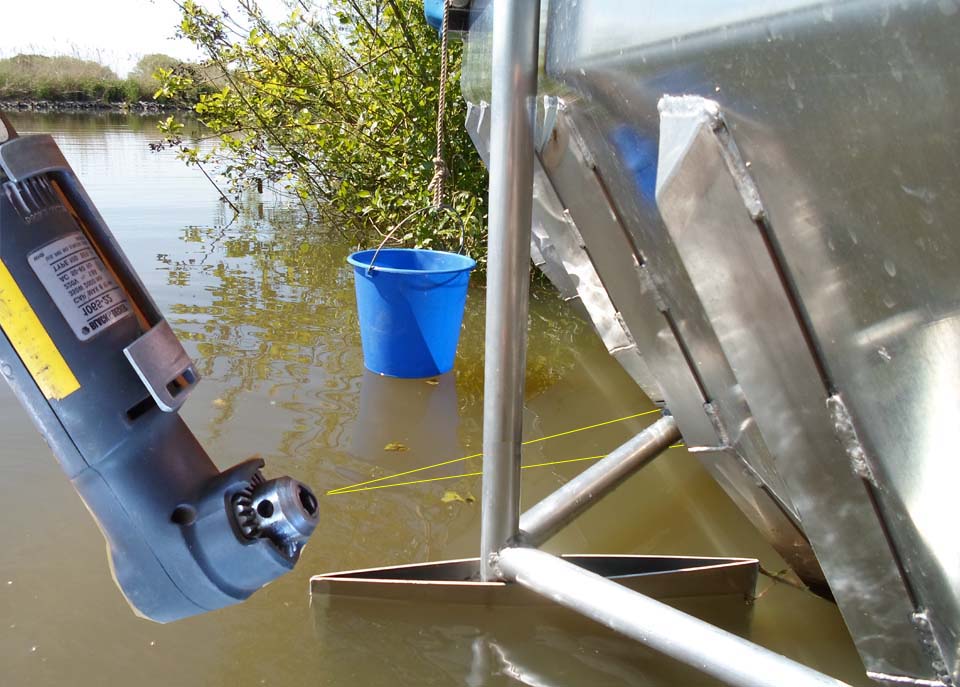
... to drill on the waterline upward
without submerging the machine I had to rent a square drilling machine (didn't
even know it existed) ...
... rent the weirdest tools from sympathetic
experts with reasonable prices at
http://www.vgbverhuur.nl/ ...
Making the holes on the waterline exactly fit was a challenge, even though Jobbe taught me the trick of the blind nut, a nut jerked in a drilled hole from the bolt's side like a blind rivet. He lent me the proper tool as well. I was in and out the river some thirty times before I had it right, in the end shivering so much that one hole got too wide and I had to go for a bigger nut. Warming up in my cabin, heated 30oC, I read Ulysses. But the final mounting day it was summer weather to forget it all.

... Done! Ancient Greek warships had things like this
to pierce the enemy ...

... this
bow will not be blown downwind so easily ... new
gadget looks as if always been part of the design ...
That was a challenge. Now would it work? Testing day. Down here the improvement. Pic A. correcting for a wind gust, pic B. Making a curve.

... Both lines
are exaggerated. Without the cutter ("old") the gust mainly blows the bow down, making you go
even further off course ...
... with a cutter ("new") the rear is blown off
more than the front, yielding autocorrection ...

... new: when you
start steering a curve the boat follows the cutter ...
| Lingeblog Home |
| Previous |
| Next |